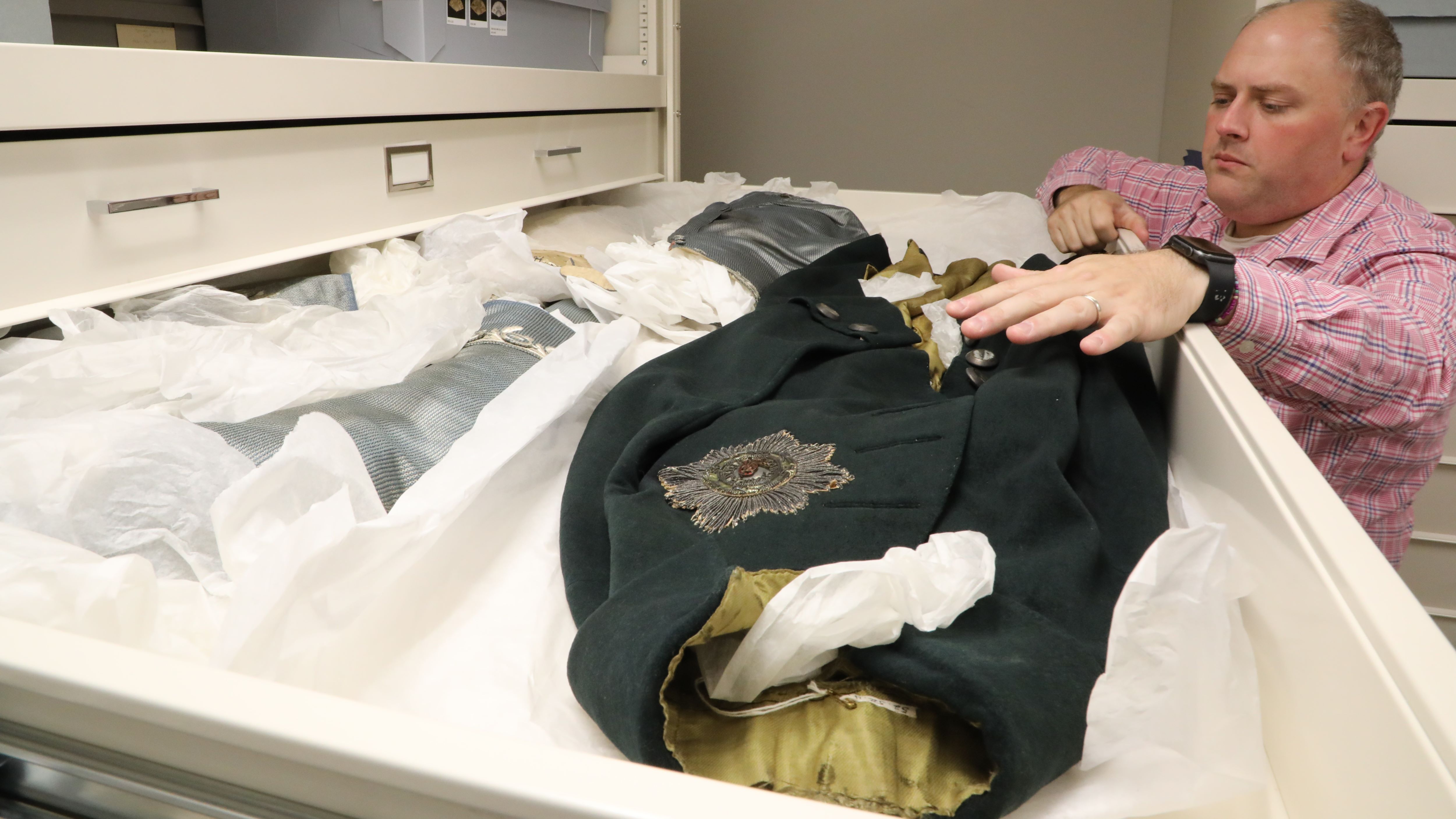
Curator Neal Hurst shows one of Lewis Littlepage’s coats. (Image: Laura Philion)

When Lewis Littlepage died in 1802, he left behind what us modern people might call a ton of clothes.
There were trousers, waistcoats, shirts, greatcoats, 24 pairs of “under drawers” and a single hat — all brought back from Europe during his time as a diplomat. Littlepage listed his clothes in a two-page inventory.
Now, what’s left of his carefully cataloged closet has a new home: the Art Museums of Colonial Williamsburg. It’s the largest group of clothes belonging to a single person in an existing collection of colonial clothes.
Born in Hanover County in 1762, Littlepage had a front-row seat to the Revolutionary War. He attended William & Mary, and then traveled Europe during the Age of Revolution. He worked at the court of the king of Spain, served briefly in the Spanish army to pay off debts and then traveled to Poland where he entered the service of King Stanislaw II in 1784.
Neal Hurst is the textile and historic dress curator at the Art Museums of Colonial Williamsburg. He said Littlepage was a colorful character who witnessed some of the most important events of the late 18th century in America and Europe during the Age of Revolution.

Waistcoats from the collection of Lewis Littlepage were likely made by hand in Poland.
“I think it's very interesting that as an American, he's able to do that in Europe. And I think that's because we've already achieved our revolution,” Hurst said.
Some of the highlights from Littlepage’s wardrobe include a three-piece suit historians believe he wore to the court of Catherine the Great of Russia in the late 1780s to work on a treaty. It’s made of blue and white silk and has a badge of the Order of Saint Stanislaus stitched onto it, marking Littlepage as a highly regarded diplomat.
A Polish-style green coat was a gift to Littlepage from King Stanislaw after the Second Partition of Poland, Hurst said. Poland lost most of its independence as a country after that, leaving Littlepage without a job. Alongside his debts and war raging across Europe, Littlepage had few options except to come home to Virginia.
“The story is that King Stanislas gave him this greatcoat as a gift for his service,” Hurst said.

Littlepage received the Order of St. Stanislaus, pictured here, for his work as a diplomat in the court of the king of Poland.
It took a while for Littlepage to get home. He died in 1802, nine months after returning to Virginia. One of the instructions in his will was to destroy all his papers.
“It kills you,” Hurst said. “But we understand why — there may be nationally sensitive material.”
Without papers, Littlepage’s clothes are largely the only direct source to learn about his life. Hurst said the patterned waistcoats and lavish outfits will tell him a lot about the man who wore them.
Hurst hopes to work on an exhibit of Littlepage’s clothes alongside other artifacts that connect Virginia and Poland.




